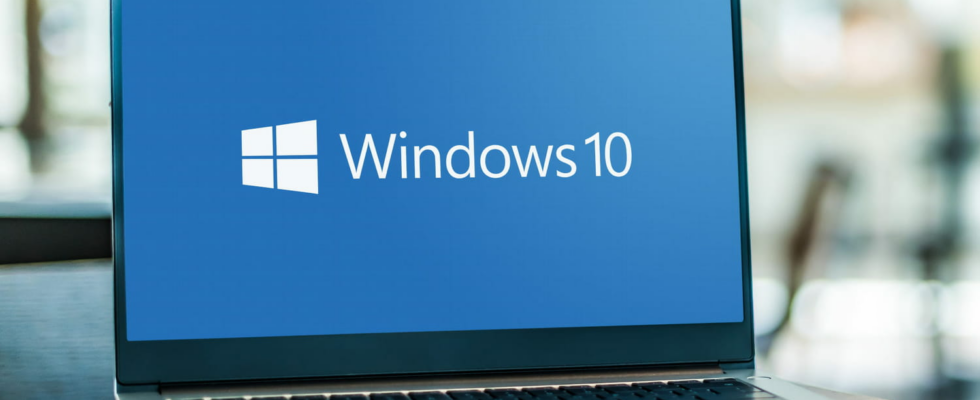While Windows 10 was supposed to be put into hibernation while awaiting its end of life scheduled for next year, Microsoft has just taken a step aside and seems to be relaunching the machine. Excellent news for its many users!
The very popular Windows 10 is closer to the end than its peak, with the almost complete cessation of its maintenance planned for the fall of 2025. Until then, the OS was supposed to only receive updates from security and bug fixes, but no more new features or improvements. However, Microsoft seems to have slightly changed its position on this subject and things are starting to move again on the Windows 10 side, with the recent opening of a testing channel and the probable arrival of a new feature, both up ‘here reserved for Windows 11.
The English site Windows Latest has indeed spotted an interesting announcement from Microsoft. The company, which seemed determined to definitively and unceremoniously bury the venerable Windows 10, made a statement that was surprising to say the least: “We’re revisiting our approach to Windows 10 and will make additional investments to ensure everyone can get the most out of their Windows PC, including Copilot in Windows (preview)”. Suffice to say that this is a radical change.
Please note, Microsoft clearly specifies in its announcement that the end of maintenance for Windows 10 remains set for October 14, 2025. To continue to benefit from security updates for Windows 10 after this date, you will still need to subscribe to the extended maintenance program, paid, the exact terms and prices for individual users have not yet been revealed (see our article). But until this deadline, the operating system will finally receive new functions that initially seemed reserved for its successor Windows 11.
What’s new in Windows 10: a Beta channel for testing
This change in approach first materializes in the opening of the Beta channel for Windows 10. To put it simply, Microsoft distributes and tests the new features for its OS to members of the Windows Insider program through different distribution channels, at number of four, Canary, Dev, Beta and Release each corresponding to a level of development progress. Until now, the Beta channel was exclusively used to test the new functions of Winows 11. From now on, it will also be available to Windows 10 users.
This means that Microsoft intends to develop, test and deploy new features for Windows 10, not just security and stability patches, between now and the end of the system’s life. Developers, administrators and experienced users can now try out the features currently being developed for Windows 10 by registering on the Beta channel via the menu Settings > Update & Security > Windows Insider Program. Keep in mind, however, that updates distributed via this channel are particularly unstable, can cause bugs, and are not at all suitable for a gaming or work personal computer.
What’s new in Windows 10: managing Android devices like Windows 11
The other new feature that supports Microsoft’s change in strategy for Windows 10 is the recent arrival of a function previously reserved for Windows 11. Also spotted by Windows Latesta Mobile Devices page was added to System Settings with optional update KB5037849. This function allows you to link your Android devices connected to the same Microsoft account as your PC in order to be able to interact with it from your computer. It is currently distributed with the optional update of May 2024 but should be deployed to all Windows 10 users during Patch Tuesday in June 2024 scheduled for next Tuesday.
Once activated, this function allows for example to receive notifications on your PC when a photo or screenshot is taken with a linked device, then to save and edit the images directly on your computer with Paint or Pictures. It’s quite practical although a little limited at the moment, even if the Mobile Devices function could in the future be enriched with new possibilities for interacting with Android devices. But the notable fact is that this function was initially a novelty intended exclusively for Windows 11, which Microsoft finally decided to bring to Windows 10. Thus, the operating system is not completely fixed and its users will continue to receive functional improvements until the end of its maintenance next year. Excellent news when we know that most do not want or cannot upgrade to Windows 11, as Microsoft is encouraging them to do. From there to hope that the publisher extends the life of its “old” system…
